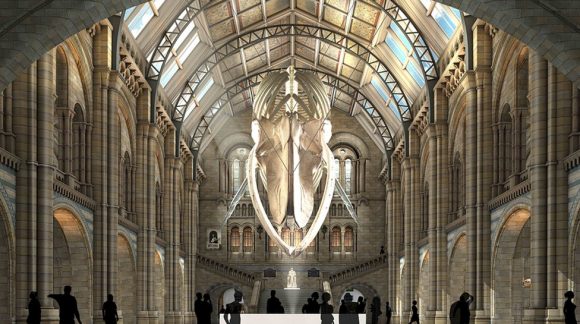Published: 29th January 2015

For more than a century, visitors to the Natural History Museum London have been left awestruck by the sight of ‘Dippy’ the Diplodocus skeleton. The announcement, that officials are planning to replace him with the blue whale skeleton, currently hanging in the mammal’s gallery, risks upsetting thousands of devotees of the Museum.
So what does the blue whale boast that Dippy can’t deliver? Well, the answer is: authenticity.
Dippy is composed of plaster casts of 356 bones, including the 70 vertebrae in its long tail. It is a near replica of a Diplodocus carnegii skeleton unearthed in the United States in 1898.
“Everyone loves ‘Dippy’, but it’s just a copy,” commented Sir Michael Dixon, the NHM’s director, “and what makes this museum special is that we have real objects from the natural world – over 80 million of them – and they enable our scientists and thousands like them from around the world to do real research.”
Dippy’s days are numbered
It was time to recognise the importance of the living species in the world today that are under threat of extinction, he added.
“As the largest known animal to have ever lived on Earth, the story of the blue whale reminds us of the scale of our responsibility to the planet,” Sir Michael said.
The skeleton of the 25.2-metre blue whale, which the museum bought for £250 in 1891, will be suspended from the roof of the hall and arranged in the diving position, looking down on visitors.
The female blue whale died after she was beached at the mouth of Wexford Harbour in Ireland after being injured by a whaler.
Whale hunting in previous centuries saw the population of blue whales fall from about 250,000 at the start of the 19th century to about 2,300 by the end of it. Since 1972, when they became a protected species, their numbers of risen to between 10,000 and 25,000 today.
Visitors wanting to see the blue whale in pride of place, will have to wait until 2017, as the changeover is complicated by the fact that the hall will have to stay open to the public throughout the process.